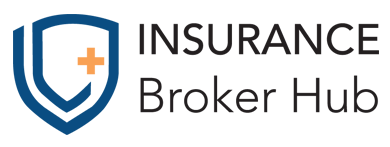As we enter month three of the COVID-19 shutdowns (and month five of the outbreak), companies continue to face economic uncertainty. While it may feel like there is a light at the end of the tunnel—and there’s hope recovery from the outbreak will be swift, companies and employees alike are in survival mode right now, and unfortunately this means the former has tough decisions to make.
In order to even have a workplace to return to, many employers have had to furlough or lay off workers.
Knowing this, if you are one of the roughly 40 million Americans who has been a casualty of the shutdowns and economic downturn—either by furlough or layoff—it may feel like uncharted territory for you.
From applying for unemployment to understanding whether you’re coming back, furloughs and layoffs have one thing in common—you’re not getting paid. That said, there are some differences between the two, especially as it pertains to your health insurance.
The Difference between a Furlough and a Layoff
What is a Furlough?
A furlough is an unpaid leave of absence. Most of the time, furloughs are used for a company that is financially struggling to cut costs for a period hoping to bring the employee back when that period passes. While yes, you may not be getting paid, this is meant to be a temporary arrangement, often resulting in benefits retention.
When employers furlough workers, they avoid some administrative processes involved in terminating an employee. For example, there is no severance package if you are entitled to receive one.
- Why did the company choose this? The choice to furlough an employee is meant to be temporary, and with many companies remaining optimistic, they still want to keep their employees around for the future. During the last recession, many employees found it easier to position themselves for recovery by opting to keep employees around.
- Am I getting paid? You probably already know, but no.
- Can I receive unemployment? As unemployment is managed at the state level, this answer depends on where you live. However, part of the CARES Act did allow for the extension of unemployment insurance to workers who generally aren’t eligible at the state level, so long as the unemployment is connected to the coronavirus outbreak.
- Am I eligible for the federal $600 weekly payment if I’m furloughed?
- How long will this last? Ideally, this is a short-term arrangement and will be treated as such. Sometimes these terms are negotiated.
- If this is a short term arrangement, am I guaranteed my job back? Without an expected return date, a furlough could turn into a layoff if departments are downsized. Employers are not required to rehire you after a furlough ends.
- Can I seek temporary employment? Likely, the answer is yes. Consult your employee handbook and connect with your HR department to understand your options.
What is a Layoff?
Alternatively, a layoff is meant to be permanent. This means that ties are severed, and all benefits go away alongside this.
Health Insurance during Furlough vs. Health Insurance during a Layoff
Understanding this, you need to understand your options, especially as it pertains to health insurance.
Health Insurance during a Furlough
If you have been furloughed, despite receiving no pay, you likely still have employer-sponsored insurance. As paperwork has not been filed that results in your termination, you are still employed and likely retain your health benefits.
Look at Your Plan
Though some employers have worked with their health insurance companies to continue coverage for furloughed, others may not have done so.
You’re Likely Still Responsible for Your End
Another thing that doesn’t change when you’re furloughed—except in extremely rare circumstances—you still have to cover your portion of your health insurance premiums. Some employers like JCPenney agreed to cover 100 percent of employee-paid premiums and offer full health benefits to all furloughed associates, but this is a rare case.
What Should You Do about Premiums during the Furlough?
As you are still responsible for your end of the premiums, so you likely will need to send a check to cover your contribution amount or speak with your employer about potential catch-up options.
What about HSA and FSA Dollars?
As you are not earning a paycheck, common contributions are likely unavailable to you. For example, you may not have the ability to make pre-tax contributions to your 401(k), Health Savings Account, or Flexible Spending Account.
Health Insurance after a Layoff
Alternatively, with layoffs representing a termination of employment, you need to seek continuing coverage with COBRA, enroll in a spouse’s plan, take advantage of a special enrollment period to sign up for a marketplace plan, or look for short-term insurance.
COBRA
For many employees who were laid off, the first option you will be presented is to continue your benefits using COBRA. Under this, you receive the same coverage under the same plan you had prior to the layoff, but are responsible for both the employer and employee contributions to your premium. Learn more in our article COBRA vs. Marketplace Coverage in the Event of a Job Loss.
Short-Term Insurance
Short term health insurance is a type of health plan that can provide you with temporary medical coverage when you are between health plans, outside enrollment periods, and need coverage. Designed as a bridge, these plans often have barriers to entry, higher deductibles, and may offer less coverage. Know your options and learn more about short-term health insurance here.
Marketplace Enrollment: Special Enrollment Period
Under the 2010 Affordable Care Act, those looking to enroll for health coverage on the insurance marketplaces must do so during Open Enrollment, the yearly period when people can enroll in a health insurance plan. However, special circumstances can allow you to enroll outside of these periods. However, with Job Loss considered a qualifying life event, you may be able to enroll in coverage in the marketplace. Learn more about qualifying life events and the special COVID-19 Special Enrollment Period here.
You Have Options: Protect Yourself
Insurance matters—and coverage during a pandemic is a necessity. Costs for treatment, hospital stays, and even testing can add up, and if you go uninsured, you may see five- or six-figure bills for care.
That said, you do have options. Whether you are eligible to enroll as a result of lost coverage, need to apply under the emergency Qualifying Life Event, need COBRA, or are seeking short-term health coverage, it pays to have someone in your corner who knows how to help.
Shopping for insurance used to be confusing and time-consuming. But with the help of our national network of licensed brokers, it doesn’t have to be. Insurance Broker Hub has helped over 10,000 consumers find the coverage they need at a price they can afford.
Our free service gives you access to an independent network of national brokers who have the experience and expertise to design a plan around your needs and budget. Ready to get started? Simply request a no obligation health insurance quote here.


